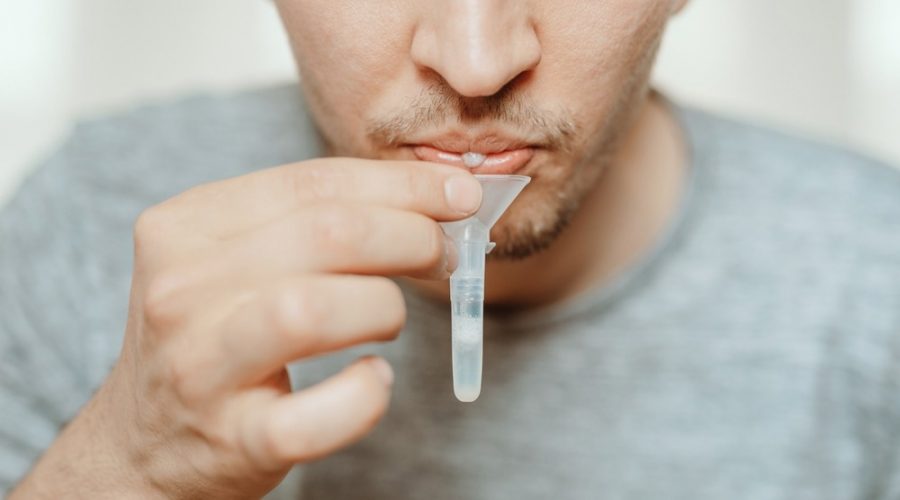The validity of saliva samples after long-term storage for detection of SARS-CoV-2
In a recent study published in PLOS ONE, researchers investigated if storage time could affect the reliability of human salivary samples for detection of severe acute respiratory syndrome coronavirus (SARS-CoV-2).

Background
Nasopharyngeal swab samples have been the gold standard for coronavirus disease 2019 (COVID-19) diagnosis, but saliva has emerged as an essential type of sample for multiple diagnostic assays, including COVID-19, due to ease of sample collection and storage. However, the reliability and viability of salivary samples stored >28 days for diagnostic assays have not been extensively investigated.
About the study
In the present study, researchers evaluated the long-term viability and diagnostic reliability of salivary samples obtained from patients with OVID-19 to explore if the duration of storage could affect the salivary viability and reliability for SARS-CoV-2 detection.
Deidentified residual saliva samples were obtained from the Emory University staff, students, and students for asymptomatic COVID-19 surveillance from November 2020. The samples were screened by SARS-CoV-2 nucleocapsid (N) protein antigen tests and quantitative reverse transcription-polymerase chain reaction (RT-qPCR).
For the analysis, ten salivary samples were randomly chosen from every month between December 2020 and October 2021. In case <10 samples were available from a month, all saliva samples of that month were analyzed, and if >10 samples were obtained in a month, four to five samples of that month were additionally obtained to be utilized in case the initially selected samples could not be re-tested.
All frozen residual samples from university students were retested by RT-qPCR and SARS-CoV-2 N antigen testing till November 2021. The initial test and re-test cycle threshold (Ct) values of the RT-qPCR reports and initial test antigen concentrations and re-test antigen concentrations obtained by antigen testing were compared. The viability of saliva samples stored for ≤12 months was evaluated, the intraclass correlation (ICC) values were derived, and a sensitivity analysis was performed, including only study participants for whom complete N1 Ct data was available.
Results
In total, saliva samples of 87 study participants were analyzed, and the average re-test N1 Ct values (26.9) were lower than the initial test Ct values (27.7). Nevertheless, the reliability and correlation of the samples were preserved (ICC 0.90). In the sensitivity analysis, the reliability and correlation were reduced from high to moderate levels (average test and re-test RT-qPCR Ct values were 27 and 26, respectively, ICC 0.9).
High reliability and correlation were observed for eight months, and excellent reliability was observed for six months, indicative of the long-term stability of saliva at -80°C storage. The reliability and correlation for January were low in the main analysis and sensitivity analysis (average test and re-test RT-qPCR Ct values were 28 and 26, respectively, ICC 0.4).
ICC values were relatively stable throughout the year, except in January, indicative of the stability of saliva samples over time. Varying reliability and correlations were observed for antigen concentrations without clear trends over time (average test antigen concentration and re-test antigen concentrations were 333 and 179, respectively, ICC 0.4).
All antigen concentrations were considered positive, but wide monthly changes were observed in the main analysis and sensitivity analysis after excluding values lower than the detection limit (average test values and re-test values for antigen concentrations were 353 and 190, ICC 0.4).
Ct values were stable over time, whereas antigen concentrations lacked Ct value reliability; however, the test and re-test values for antigen concentrations maintained a positive correlation throughout the study period with moderate agreement at a few points. The overall percent change in test values and re-test values for Ct and antigen concentrations by month were -2.9% and -43%, respectively.
Conclusion
Overall, the study findings showed that salivary samples stored at -80˚C were viable in detecting SARS-CoV-2 for ≤1 year, and therefore, saliva could be included in the diagnostic realm of COVID-19. The authors believe that the present study is the first to have examined the long-term reliability of salivary samples for SARS-CoV-2 detection and that the findings could enable the use of salivary diagnostics for COVID-19. However, future studies with larger sample sizes and a more uniform monthly sample distribution must validate the findings.
- Frediani, J. et al. (2022) "SARS-CoV-2 reliably detected in frozen saliva samples stored up to one year", PLOS ONE, 17(8), p. e0272971. doi: 10.1371/journal.pone.0272971. https://journals.plos.org/plosone/article?id=10.1371/journal.pone.0272971
Posted in: Medical Science News | Medical Research News | Disease/Infection News
Tags: Antigen, Coronavirus, Coronavirus Disease COVID-19, covid-19, CT, Diagnostic, Diagnostics, Nasopharyngeal, Polymerase, Polymerase Chain Reaction, Protein, Respiratory, SARS, SARS-CoV-2, Severe Acute Respiratory, Severe Acute Respiratory Syndrome, students, Syndrome, Transcription

Written by
Pooja Toshniwal Paharia
Dr. based clinical-radiological diagnosis and management of oral lesions and conditions and associated maxillofacial disorders.
Source: Read Full Article
